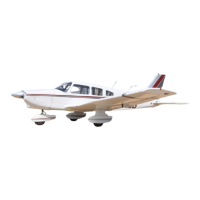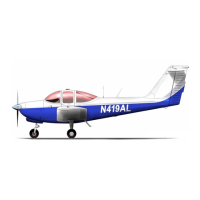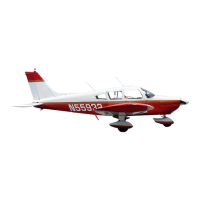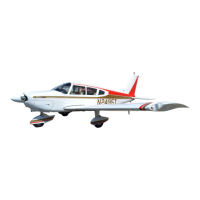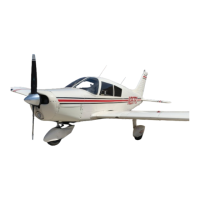THE NEW PIPER AIRCRAFT, INC.
PA-32-301FT / 301XTC
MAINTENANCE MANUAL
PAGE 6
Jun 1/03
3F14
32-20-00
(7) Remove the airplane from the jacks.
(8) Install the propeller (refer to Chapter 61) and engine cowling. (Refer to Chapter 71.)
D. Alignment
(1) Place the airplane on a smooth level floor that will accommodate the striking of a chalk line.
(2) Place the airplane on jacks. (Refer to 7-10-00.)
(3) Level the airplane laterally and longitudinally. (Refer to 8-20-00.)
(4) From the center of the tail skid, extend a plumb bob and mark the contact point on the floor.
(5) Extend a chalk line from the mark on the floor below the tail skid to a point approximately three
feet forward of the nose wheel. Allow the line to pass under the wheel at the center line of the
tire. Snap the chalk line.
(6) Ascertain that the rudder is properly rigged and the rudder cable tension is correct. (Refer to
27-20-00.)
(7) Clamp the rudder pedals to align in a lateral position. Ensure that rudder pedals are in a
neutral position. (Refer to Figures 3 and 4.)
(8) Ascertain that the nose wheel is in alignment with the longitudinal axis of the airplane or chalk
line.
(9) Install the steering assemblies between the steering horn and rudder pedals without any load
on the rods. Adjust the rod ends to obtain this no load condition, and connect the rods to the
steering horn.
NOTE: Check that the rod ends have sufficient thread engagement, by use of the check holes
in the rods or a minimum of three-eighths of an inch thread engagement.
(10) Ascertain that the rudder pedal stops are adjusted in accordance with instructions given in
27-20-00.
(11) To check the nose gear steering for its maximum right and left travel, mark on each side of the
nose wheel an angle line from the center line and wheel pivot point. (Refer to Chart 1 for nose
wheel turning angle.) Turn the wheel to its maximum travel in both directions to check for
allowable travel. Should travel be exceeded in one direction and not enough in the other
direction, check for possible damage to the gear fork or torque links.
(12) When the wheel is turned to its extreme right or left travel, there should be .06 to .12 of an inch
clearance between the nose wheel steering stops. This is due to the stops on the rudder
making contact ahead of the nose gear stops. Prior to checking and/or making this adjustment,
ascertain that the rudder travel is correct. (Refer to 27-20-00.)
(13) Adjust the shimmy dampener by turning the nose wheel against its stops and adjusting the rod
end of the dampener for adequate travel to both directions.
(14) Remove the aircraft from jacks.
